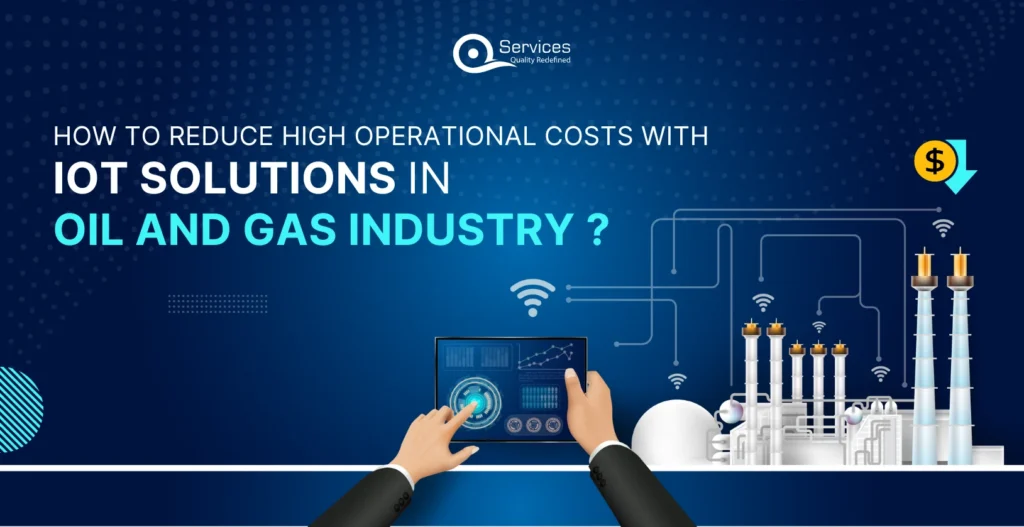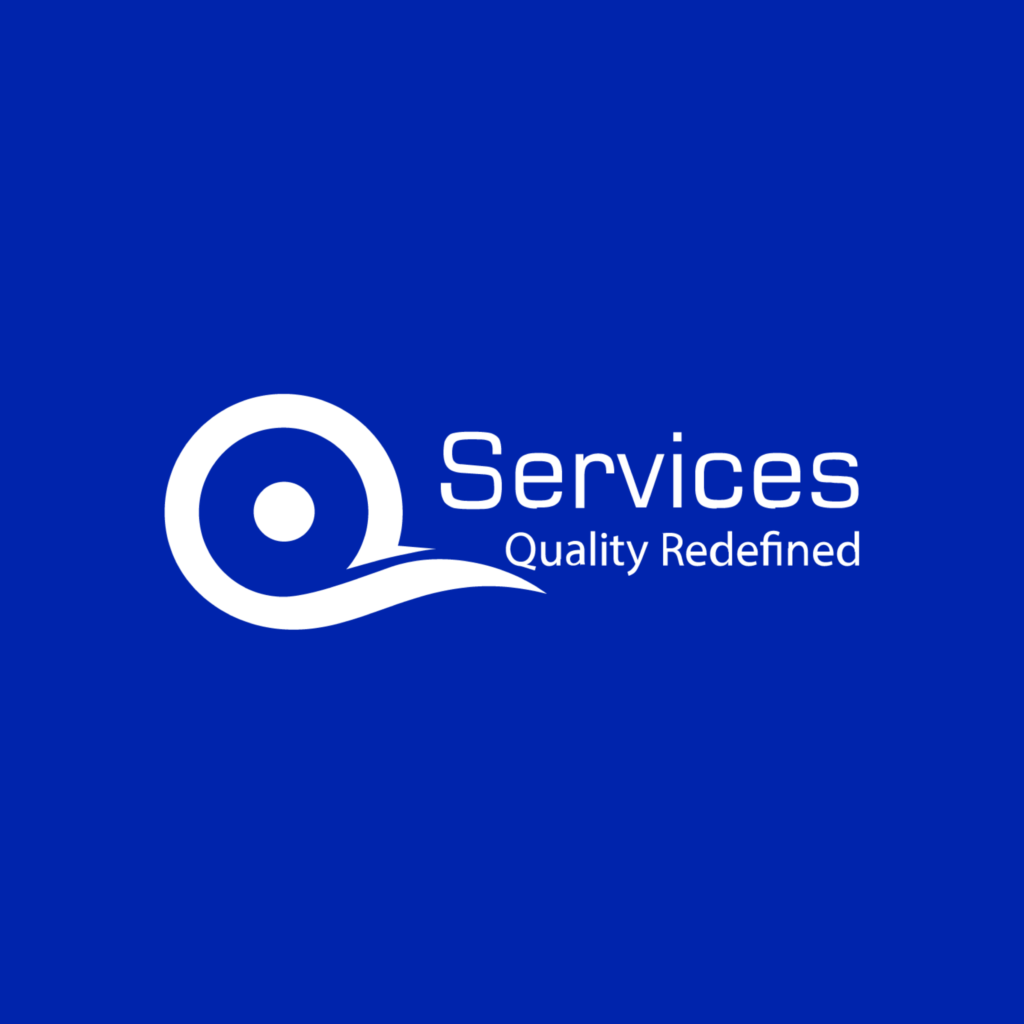
Home » How to reduce High Operational Costs with IoT solutions in Oil and Gas industry ?

The oil and gas industry is a massive part of our global economy, powering everything from cars to factories. But let’s be honest, it’s got its fair share of headaches. High operational costs, inefficiencies, and safety issues are just a few of the major problems. Did you know that energy costs make up about 15% of total production expenses in this industry? That’s huge! And here’s a fun fact: recent studies show that by optimizing energy use, upstream operators could save up to 20%. That’s a whopping $10 billion in cost reductions per year for the upstream sector. So, it’s clear there’s a lot of room for improvement.
In this blog, we’ll focus on how IoT solutions can help reduce these high operational costs in the oil and gas industry. Therefore, if you’re looking to cut costs and boost efficiency, IoT solutions for oil and gas industry are something you definitely want to get on board with.
Imagine a network of smart devices all working together to make the oil and gas industry run smoother and more efficiently. That’s IoT in action. IoT in oil and gas industry involves a web of interconnected sensors, devices, and systems that constantly collect and analyze data in real-time. These sensors monitor everything from the temperature and pressure in pipelines to the health of critical equipment. For example, a sensor might detect a slight increase in pipeline pressure, thereby signaling a potential issue long before it becomes a major problem.
In contrast to traditional systems, which rely on periodic manual checks and often respond only after a problem occurs, IoT enables continuous, proactive monitoring. Consequently, this allows issues to be predicted and addressed before they cause downtime or costly repairs. By integrating IoT, the oil and gas industry can, therefore, significantly cut down on inefficiencies, reduce operational costs, and enhance overall safety.
Get free Consultation and let us know your project idea to turn into an amazing digital product.
The oil and gas sector depends on complex machinery that is prone to frequent breakdowns in harsh environments. Additionally, challenges such as limited spare parts and skill shortages exacerbate maintenance difficulties. Consequently, unplanned equipment failures can cause substantial downtime, with costs surging to $149 million per site in 2021-2022. Not only does this downtime disrupt production, but it also increases safety risks as crews work under pressure.
Despite oil and natural gas being primary global energy sources, the industry still suffers from significant inefficiencies. Specifically, much of the energy is wasted before it is converted into valuable output, which impacts financial performance. For example, inefficiencies in energy use directly translate to higher operational costs, a situation further strained by frequent downtime.
Operating across diverse and challenging environments, the oil and gas industry often encounters high supply chain costs. Poor logistical planning, fragmented supply chains, and frequent plan changes contribute to high price errors and operational delays. These inefficiencies impact everything from procurement to material management and end-to-end supply chain visibility.
Labor expenses in the oil and gas industry are escalating, with rates increasing by up to 9% annually. Additionally, the cost of standard-use materials like casings and tubing steel parts is rising at around 5% per year. Manual inspections, which are costly and labour-intensive, add to these rising costs by requiring highly specialized technicians and extensive time for each inspection.
Manual inspections involve examining equipment in person to identify defects that could require expensive repairs or represent a risk to safety. This is a costly and inefficient operation that necessitates the use of expert workers to inspect every component under potentially hazardous conditions. Higher operating costs are a result of these inspections’ labour-intensive nature.
The oil and gas industry has seen a considerable transformation due to the integration of IoT technologies. Energy conservation, Predictive maintenance, and many more are examples of IoT use cases in the oil and gas industry.
Predictive maintenance leverages IoT sensors and advanced data analytics to keep equipment running smoothly. By monitoring critical metrics like temperature, vibration, and pressure, these sensors feed data into machine learning algorithms. The algorithms detect patterns and anomalies, allowing you to foresee potential failures before they disrupt operations. This proactive approach means maintenance is scheduled at the most convenient times, preventing unexpected downtime. This is one of the many IoT oil and gas use cases that enhance operational efficiency and reliability.
The real magic of predictive maintenance lies in its ability to slash both downtime and maintenance costs. Early detection of issues means repairs are performed during non-peak hours, saving time and money. Additionally, avoiding catastrophic failures not only cuts immediate repair costs but also extends the lifespan of your equipment.
SkySpecs, a leader in wind energy maintenance. Using drones equipped with high-resolution cameras, SkySpecs inspects wind turbines and analyzes the images with machine learning. When a hairline crack was detected early on one turbine blade, they avoided a potential $300,000 repair bill and weeks of downtime. Instead, they completed the repair in just a few days for $100,000, saving $200,000.
Real-time monitoring and asset management use IoT sensors and software to constantly check how equipment is performing. In oil and gas IoT, these sensors collect data on things like temperature, pressure, vibration, and power use. This information is then analysed right away, giving a continuous update on the condition of the equipment. This helps in making quick decisions and fixing problems before they become big issues.
The main ways this save cost include:
Constant monitoring means you don’t need to inspect equipment manually as often, which saves time and labor costs.
By spotting problems early, you can fix them before they turn into major repairs or replacements.
Real-time data helps you focus maintenance efforts where they are needed most, using resources more efficiently.
Shell, a global energy company, uses a system called Smart Fields to monitor their offshore platforms. This system uses sensors to continuously track how the platforms and underwater wells are performing. The real-time data helps Shell optimize production and address issues quickly, reducing operational costs significantly.
Internet of Things (IoT) devices are key in monitoring and optimizing energy use. These devices collect data on how energy is consumed and use this information to make smarter decisions. For example, smart thermostats can learn a building’s heating and cooling patterns and adjust the temperature to save energy efficiently.
The main advantage of optimizing energy consumption is the reduction in energy bills. By using energy more efficiently, both businesses and households can save a lot of money. Moreover, energy optimization ensures that energy is not wasted but utilized in the most effective way possible. As a result, this leads to overall enhanced efficiency.
The Internet of Things (IoT) is changing the way supply chains and logistics work. IoT devices with sensors and connectivity track and improve these processes. They monitor the location and condition of products in real-time as they move through the supply chain. This constant visibility allows for better forecasting, inventory management, and decision-making.
Using IoT in supply chain and logistics can save a lot of money. Here’s how:
Real-time data on material availability and demand helps with planning and negotiating with suppliers.
IoT devices monitor and improve transportation routes and conditions, cutting transportation costs.
IoT helps optimize storage and retrieval processes, making better use of space and lowering storage costs.
Example: Zara’s Agile Supply Chain
Zara, a leading fast-fashion retailer, uses IoT to enhance its supply chain and logistics, enabling fast production and distribution to quickly respond to fashion trends. IoT devices track products from manufacturing to stores, ensuring timely delivery and minimizing delays. By keeping low inventory levels, Zara adapts quickly to trends, efficiently managing stock to avoid overstock and stockouts. IoT also supports frequent product updates, enabling designs to move to stores in just two weeks by leveraging real-time sales and trend data. Additionally, IoT streamlines warehousing by optimizing storage and retrieval processes, which leads to more efficient space use and faster order fulfillment. Consequently, this approach not only reduces costs but also keeps Zara competitive by swiftly adapting to market trends.
IoT oil and gas solutions make operations in the industry more efficient by automating tasks and improving processes. IoT devices, like sensors and smart equipment, gather real-time data on various operations. This data helps automated systems perform tasks and make decisions, reducing the need for manual work. Implementing IoT for oil and gas optimizes resource management and enhances overall productivity in the sector.
Automation cuts down on the need for manual work, saving money on labor.
Automated systems speed up operations and reduce mistakes, boosting productivity.
IoT tracks equipment health, allowing for timely maintenance that avoids costly repairs and breakdowns.
Tesla’s Fremont factory shows the benefits of IoT automation. By using advanced robots alongside human workers, Tesla has created an efficient production line, leading to big savings and better performance.

There are several challenges organization faces in implementing IoT solutionsin oil and gas, here are some of them:
Implementing IoT solutions brings significant data security and privacy concerns. Specifically, IoT devices produce vast amounts of data, some of which may be sensitive. Consequently, the risks include financial losses and potential damage to a company’s reputation due to data breaches. To address these concerns, companies should use strong encryption methods, conduct regular security audits, and train employees on data protection practices. When considering IoT applications in the oil and gas industry, it is crucial to, therefore, implement robust security measures to effectively safeguard the sensitive data generated by these systems.
Integrating IoT solutions with older, legacy systems can be challenging. These systems might not handle the volume and type of data generated by IoT devices. Solutions to this issue include using middleware or IoT platforms that act as a bridge, converting data into a format compatible with legacy systems.
Managing the large volumes of data from IoT devices poses another significant challenge. Consequently, companies need to store, process, and analyze this data efficiently. However, the costs of data storage and processing can be high, particularly if new hardware and software are required. In response, cloud-based solutions offer a scalable alternative, thereby reducing costs by providing flexible storage and processing capabilities.
IoT solutions are revolutionizing the oil and gas industry by significantly cutting operational costs. By harnessing real-time monitoring and predictive maintenance, these technologies not only optimize equipment performance but also reduce downtime, thereby extending asset life. Consequently, these improvements lead to substantial cost savings. Moreover, automation further enhances efficiency by streamlining repetitive tasks and, in turn, minimizing labor costs.
Moreover, integrating IoT solutions for real-time logistics monitoring—an approach we explored in a previous blog—further amplifies these benefits. By applying real-time tracking to logistics, companies can optimize their supply chains, manage inventory more effectively, and reduce transportation and warehousing costs.
While challenges such as data security, system integration, and data management must be addressed, by implementing robust encryption, utilizing middleware for integration, and leveraging cloud-based solutions, these concerns can be effectively managed. As a result, IoT solutions empower oil and gas companies to improve operational efficiency, lower expenses, and stay ahead in a competitive market.

Our Articles are a precise collection of research and work done throughout our projects as well as our expert Foresight for the upcoming Changes in the IT Industry. We are a premier software and mobile application development firm, catering specifically to small and medium-sized businesses (SMBs). As a Microsoft Certified company, we offer a suite of services encompassing Software and Mobile Application Development, Microsoft Azure, Dynamics 365 CRM, and Microsoft PowerAutomate. Our team, comprising 90 skilled professionals, is dedicated to driving digital and app innovation, ensuring our clients receive top-tier, tailor-made solutions that align with their unique business needs.

Automation is quickly becoming a major driver of growth in the finance sector. The way it manages rising transaction volumes, complex compliance needs, and other critical processes has caught the attention of many financial institutions.

Most emerging banks are struggling to handle more customers, increasing financial data, and growing regulatory demands. They now need to move beyond traditional methods and adopt faster, more scalable solutions.

At the heart of this change are technologies like AI, cloud computing, and automation. And when you collaborate with Microsoft Solution Partners, you can ride this wave of transformation.
The Internet of Things (IoT) is transforming the oil and gas industry by enabling real-time equipment and pipeline monitoring, which boosts operational efficiency and safety. It provides valuable data for predictive maintenance, anomaly detection, and process optimization, leading to reduced downtime and cost savings. Additionally, IoT supports remote asset management and energy consumption reduction, driving profitability and modernizing industry operations.
Cutting operating costs in the oil and gas industry relies on technologies like AI and drones, which have reduced expenses by 40% through real-time monitoring and predictive maintenance. Strategies like renegotiating contracts, optimizing logistics, and adopting eco-friendly practices further enhance savings and efficiency.
IoT reduces costs by enabling real-time monitoring and predictive maintenance, cutting downtime and maintenance expenses. Its low power consumption and automation capabilities boost efficiency, while data insights help optimize operations and resource management, potentially saving businesses up to $1.2 trillion in productivity costs.
The Internet of Things (IoT) boosts operational efficiency by enabling real-time monitoring, which helps detect and resolve issues before downtime occurs, reducing maintenance costs and improving uptime. IoT devices automate processes, enhance productivity, and provide valuable insights into asset status, bridging the digital-physical gap. In manufacturing, IoT increases robotic efficiency, improves safety, and reduces unscheduled maintenance, making it crucial for enhancing efficiency across industries.
Yes, IoT solutions can enhance safety by monitoring hazardous conditions in real-time, such as gas leaks or equipment malfunctions. They also help ensure compliance with industry regulations by providing accurate data for reporting and audits

Founder and CEO

Chief Sales Officer
